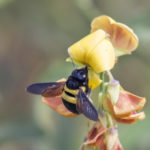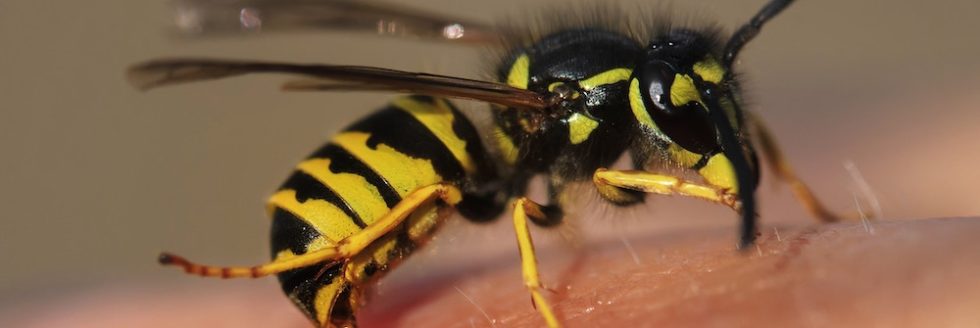How to Protect Your Home from Carpenter Bees
During the spring and summer months, homeowners will start to notice the appearance of large yellow and black bees flying around their properties. The bees typically measure up to one inch and are often mistaken for bumblebees. However, unlike bumblebees, carpenter bees can cause serious structural damage to your home. A carpenter bee problem should be addressed early on since over time, populations can grow exponentially.
Carpenter Bee Identification
Before worrying about carpenter bees attacking the wood on your property, you should know how to tell the difference between a carpenter bee and a bumblebee. Here are a few common identifiers to check for:
Appearance
Bumblebees typically have fuzzy hair that covers both their heads and abdomens. A carpenter bee’s abdomen is usually hairless and will have a shiny appearance that ranges in color from bluish black to green or purple.
Behavior
Bumblebees are social bugs that reside in hives with a single fertile queen. Carpenter bees are solitary with every female being fertile.
Nesting habits
Bumblebees usually burrow into the ground or look for crevices around stonework or landscape piles. Carpenter bees earn their moniker by being able to drill through wood and create nests inside the holes they make.
Carpenter bees will hibernate in wood over the winter and reappear in the spring. Although carpenter bees have been found to nest in all types of wood, they have been observed preferring untreated and unpainted wood. Holes made by carpenter bees for nests can measure about ½ inch in diameter. After the initial hole is made, the carpenter bees will create tunnels inside the wood that can measure anywhere from 1 to 4 feet long. Homeowners are likely to hear drilling sounds made by the female during the process of tunneling. You may also see male carpenter bees hovering around the entrance to protect the nest. The good news is that male carpenter bees have no stingers. Female carpenter bees can sting, but they are not aggressive and rarely use their stingers.
Inside the tunnel, the female carpenter bees create small cells, usually between 6 and 10, to lay her eggs. She will regurgitate nectar and pollen to feed her larvae. During late summer, the now adult carpenter bees will emerge from the tunnel.
Getting Rid of Carpenter Bees
Homeowners who suspect the presence of carpenter bees should not handle the issue without professional assistance. Using store-bought insecticides can be dangerous since the carpenter bees may sting and you may be unable to kill bees found inside the tunnel. A pest control professional can inspect the property for the presence of carpenter bees and then customize a pest management plan of action. Openings for carpenter bee nests need to be closely monitored for several days during the process of treatment to make sure all bees are removed. The professional will know the correct handling and application procedures of any products used to ensure all family members and household pets remain safe during the treatment process.
Carpenter Bee Prevention
Carpenter bee prevention is important to start as early as possible each spring. Once the females start to build their nests, the bees are harder to remove from the property. Furthermore, once the nests are in the process of being made, you’ll need to repair the damage created by the carpenter bees.
Carpenter bees are typically drawn to any wood that is bare, weathered, and unpainted. Painting all wood is an easy way to deter carpenter bees from nesting on your property. Staining wood can also help ward off carpenter bees, but wood stains are less effective than paint. When painting to prevent carpenter bees, use both a sealing primer and at least two coats of exterior paint.
For construction projects, you should carefully consider the type of wood you use. Carpenter bees are drawn to untreated softwoods most often. Using treated hardwood will make a marked difference on whether you experience a carpenter bee invasion or not. Another option is to skip wood altogether if possible and use another type of building material such as vinyl, brick, or cement.
If carpenter bees have created nests before on your property, it is important to seal any holes you find. Sealing the openings may prevent the carpenter bees from nesting on your property again. If you plan to paint or stain the wood to prevent carpenter bees, you should seal all holes and cracks first.
Check for any gaps and holes in exterior walls to prevent carpenter bees from nesting on your property. Use a caulking gun to seal the openings. Another vulnerable area could be the end of deck boards. Wire screens or metal flashing could be installed to protect the exposed wood from carpenter bees.
Carolina Pest Management is here to help with the prevention and removal of carpenter bees. The family-owned company has served the Carolinas since 1939 and always puts customers first. Contact us today for more information.


